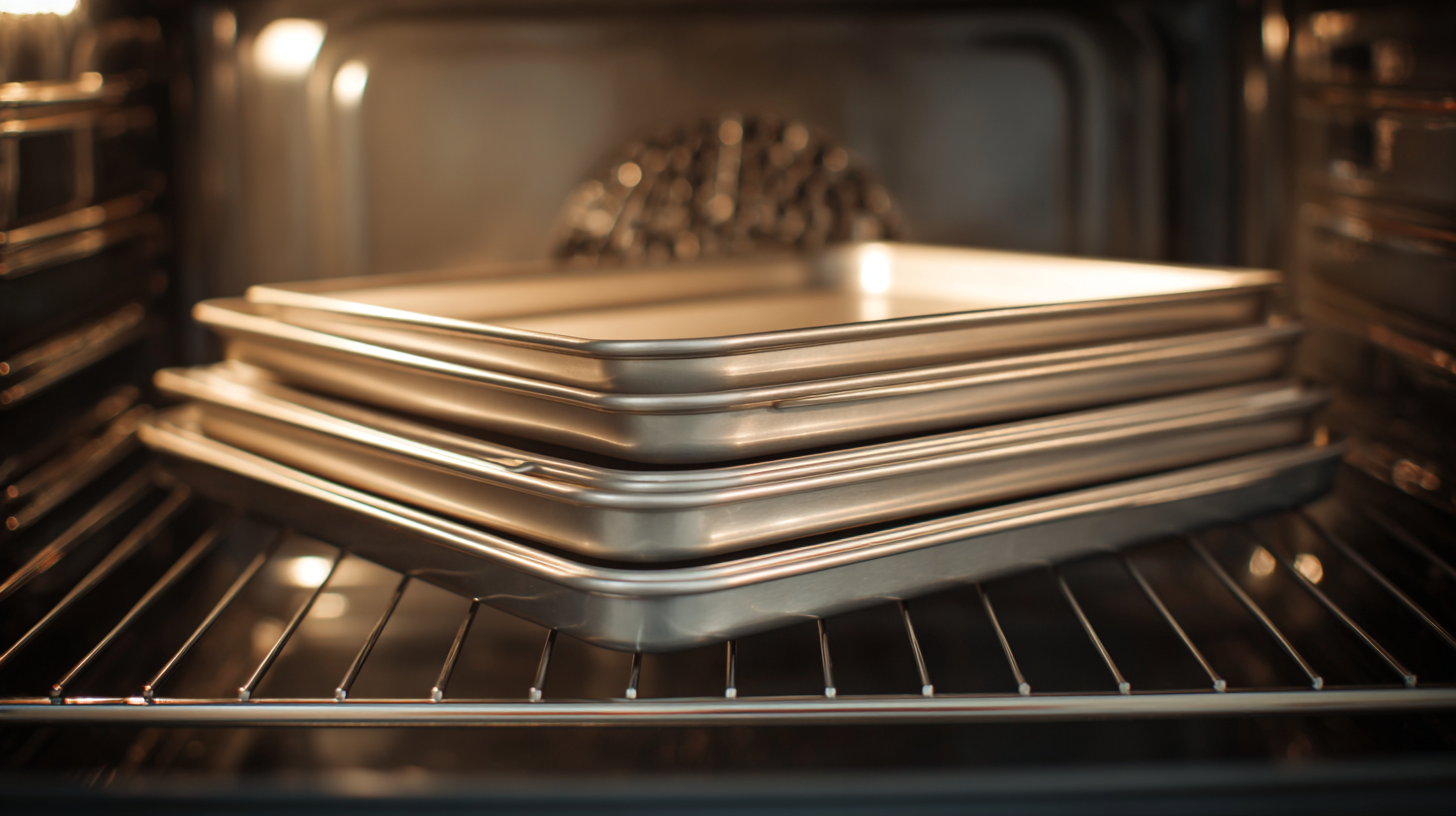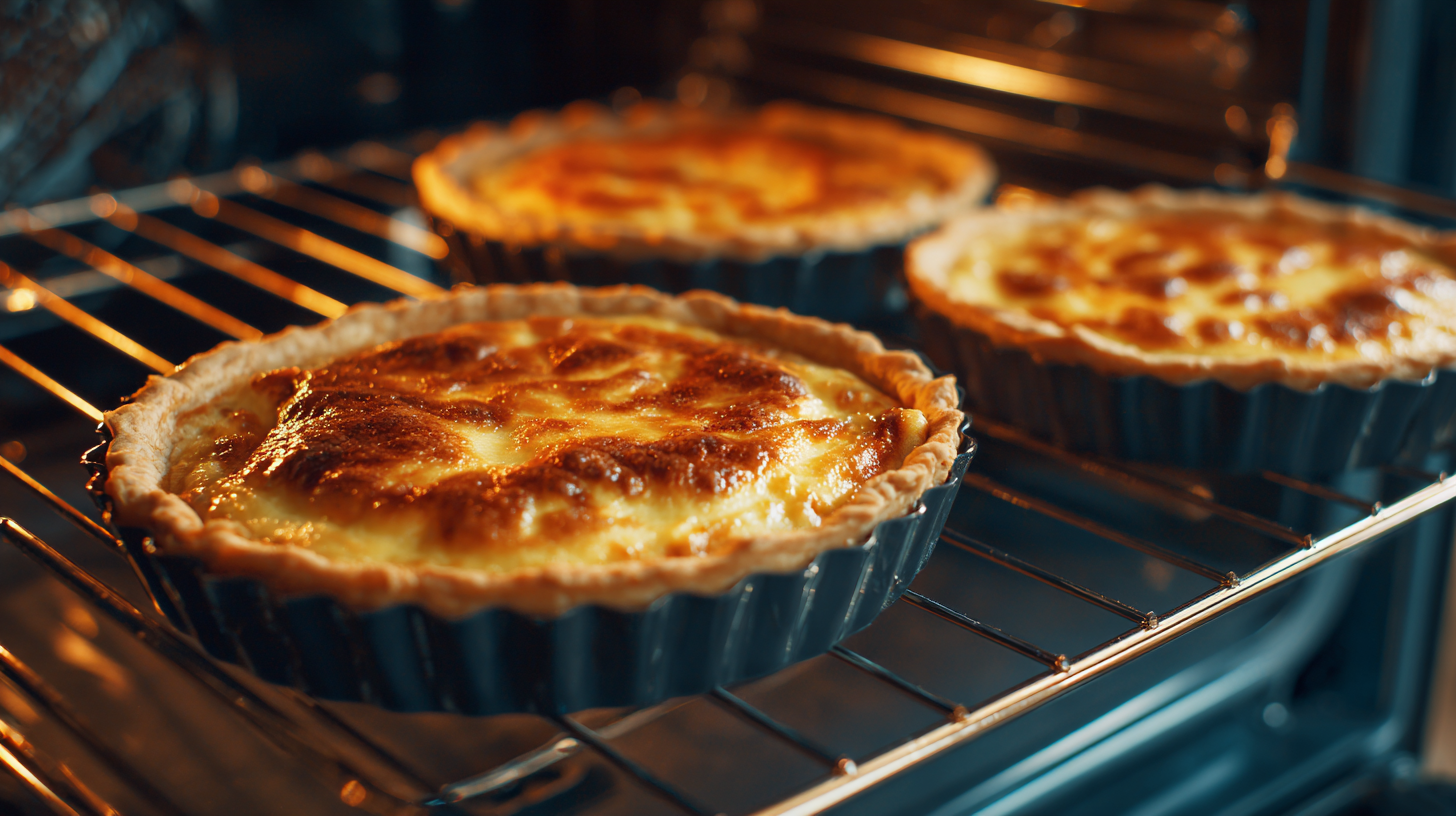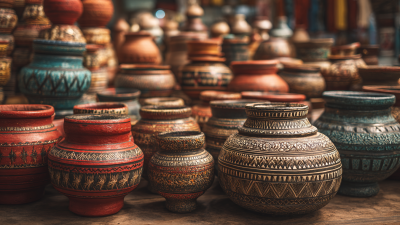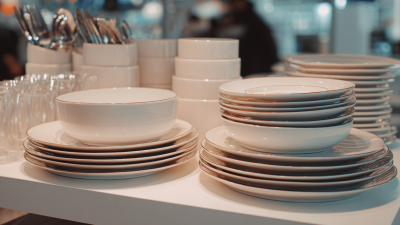When it comes to enhancing your culinary skills, selecting the right tools is paramount, and none are more essential than Oven Baking Trays. According to a recent market research report by Allied Market Research, the global bakeware market is projected to reach USD 6.14 billion by 2025, indicating a growing demand for quality baking equipment among home cooks and professionals alike. The right Oven Baking Trays can significantly impact both performance and results, enabling even heat distribution, preventing warping, and providing non-stick benefits that enhance the baking experience. With numerous materials, sizes, and features available, understanding how to choose the perfect baking trays for your kitchen is critical to achieving culinary excellence and efficiency. This guide will delve into the various types of Oven Baking Trays on the market and provide insights into how to make the best choice tailored to your baking needs.

When selecting baking trays for optimal performance in your kitchen, it is crucial to consider the material, size, and shape. According to a report by the American Institute of Baking, the choice of material can significantly influence heat distribution and cooking times. For instance, aluminum trays are known for their excellent heat conductivity and are often favored for baking, whereas stainless steel offers durability and resistance to warping but may require longer cooking times. This insight highlights the importance of choosing the right material based on your cooking style and the desired outcome.

Moreover, the size and shape of baking trays are essential factors that can impact the efficiency of your baking. A study conducted by Food and Equipment Analytics revealed that using the appropriate tray size in relation to your oven can enhance airflow and contribute to even baking. For example, a standard half-sheet pan measuring 18x13 inches is versatile for various recipes and fits most ovens perfectly, while a deeper dish may be necessary for recipes requiring more volume. By understanding these essential factors, home bakers can make informed decisions that lead to improved baking results.
When selecting the perfect oven baking trays for your kitchen, understanding the material types is crucial.
Aluminum trays are lightweight and conduct heat efficiently, making them a popular choice for even baking. However, it's essential to be aware of potential downsides.
Cooking with expired aluminum cookware can pose safety risks, and some experts caution against using aluminum for prolonged acid contact due to health concerns.
Stainless steel is another excellent option, offering durability and resistance to warping. These trays do not react with acidic foods, ensuring that your meals are safe. However, stainless steel may not conduct heat as evenly as aluminum, which could result in uneven baking.
Non-stick options, often made with coatings like Teflon, provide a convenient way to prevent food from sticking. Yet, recent discussions surrounding the safety of non-stick cookware highlight concerns about potentially harmful chemicals like PFAS. Therefore, opting for ceramic or highly-rated non-toxic alternatives can provide peace of mind while still enjoying the benefits of easy cleanup.
When it comes to baking, the size of your oven baking trays can greatly influence your cooking efficiency and the quality of your food. According to a survey by the International Housewares Association, 67% of home cooks reported that correctly sized cookware made a significant difference in their baking results. Therefore, understanding the dimensions that fit your oven is crucial. Regular oven sizes typically accommodate pans that are around 9x13 inches or 10x15 inches, but custom-sized options are available for unique ovens.
**Tips:** When measuring your oven, be sure to account for the space needed for air circulation. Ideally, leave at least an inch of space around the trays. Additionally, consider the depth of the trays; shallower pans allow for quicker cooking but may not be suitable for all recipes.
Bakers should also be aware that the material of the trays can affect heat distribution. A 2022 report from the Baking Industry Association stated that aluminum and stainless steel trays consistently provide even heat distribution, with aluminum being favored for its ability to conduct heat quickly. Thus, choosing the right size and material not only ensures that your tray fits but also enhances your baking success.
**Tips:** Always check if your baking tray fits comfortably on racks without lifting or bending. This reduces the risk of spillage during transfer.
| Tray Type | Dimensions (inches) | Material | Ideal For |
|---|---|---|---|
| Half Sheet Pan | 18 x 13 | Aluminum | Baking cookies, roasting vegetables |
| Quarter Sheet Pan | 9 x 13 | Stainless Steel | Baking snacks, small meals |
| Jelly Roll Pan | 15 x 10 | Non-stick | Baking rolled cakes, pastries |
| Broiler Pan | 16 x 13 | Porcelain Enamel | Broiling meats, fish |
| Pizza Pan | 14 | Carbon Steel | Baking pizza |
When selecting oven baking trays, understanding heat distribution is crucial for achieving even baking results. Recent advancements in kitchen technology, such as improved electric baking ovens, have been designed with efficiency in mind, enhancing heat circulation and ensuring uniform temperature throughout the cooking process. Reports indicate that these innovations can decrease baking time by up to 20% while improving the quality of baked goods, making them a vital consideration for home bakers.
Furthermore, the science of heat distribution extends beyond traditional ovens. The rise of 3D food printing technology, which employs noncontact heating solutions like graphene heaters, showcases a novel approach to cooking. This method not only allows precise control over temperature but also integrates generative AI to optimize food designs for improved cooking outcomes. Such technologies hint at the future of baking, where even heat distribution becomes an integral aspect of the kitchen arsenal, promising consistent results regardless of the baking method employed.
When it comes to baking, the right baking trays can greatly enhance your culinary experience, but their longevity and performance depend heavily on proper maintenance. According to a report by the American Baking Industry Association, nearly 30% of home bakers replace their baking equipment every one to two years due to poor maintenance. Regular cleaning is essential; using non-abrasive sponges and gentle detergents can preserve the non-stick coating, ensuring your trays remain effective and durable. Additionally, it’s best to avoid sudden temperature changes, as this can warp the metal and compromise the tray's integrity.

Another key aspect of maintenance involves proper storage. The same report highlights that 40% of baking tray damage occurs due to improper stacking. To extend the lifespan of your trays, store them flat or use protective liners between them when stacking. This simple practice can prevent scratches and dents that could affect cooking performance. Moreover, seasoning your trays with a small amount of cooking oil after cleaning can help maintain their non-stick properties, enhancing your baking results and ensuring your pans look good as new for years to come.






